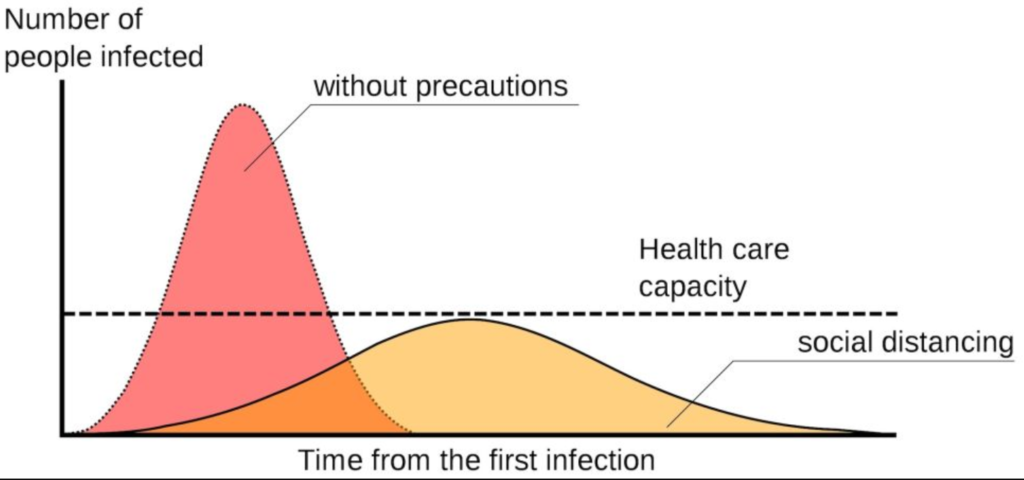We know the COVID-19 pandemic is a rapidly changing story with a lot of moving parts — here are some of the basics you might have missed.
What is the Coronavirus or COVID-19 & how did it emerge?
Coronaviruses are a family of viruses that can cause illness in humans and animals. COVID-19 is an infectious disease caused by a new and recently discovered coronavirus. The outbreak emerged in Wuhan, China in December of 2019 before spreading to other countries in later months.
There is some evidence to suggest that the virus originated from bats, but how it then transferred to humans is somewhat disputed. Early theories were that the virus moved from bats to pangolins, which are traded often illegally at wet-markets. The way wet-markets are set up could have played a critical role in the viruses ability to jump from species to species. While wet-markets exist around the world, Chinas’ markets are known to offer a wide variety of wildlife. The reason some of these animals are able to be on the market, is due to a decision China’s Government made decades ago during a famine; this video, by Vox, explains the greater context behind this issue. However, there is also a suspicion that a Wuhan bioresearch laboratory studying the coronavirus in bats had a security breach. An editorial published in The Washington Post, reports that U.S. officials in Beijing, on several occasions in 2018, alerted officials to questionable training and security at the facility and warned that an epidemic could easily emerge from the lab.
How is the virus spread?
The virus can spread from one person to another through droplets from the nose or mouth when a person with the disease coughs, sneezes or exhales. Other people can also get the virus by touching the objects and surfaces where the droplets land. Early studies suggest the virus may survive on hard surfaces from a few hours to several days.
What are the symptoms and risk levels?
The most common symptoms of COVID-19 are fever, tiredness and dry cough. Some people can become infected, but not feel sick or develop any symptoms. According to the World Health Organization, around 80% of people recover from the disease without needing any treatment. Older people and those with existing medical problems (such as high blood pressure, heart disease, lung disease, cancer or diabetes) or others with weakened immune systems are more likely to develop serious problems. Symptoms may appear 2-14 days after exposure to the virus.
What is Social Distancing and Why is it Important?
Ohio was one of the first and most aggressive at discouraging gatherings and interactions most likely to cause spread of the virus. Ohio Governor Mike DeWine closed schools in mid-March and issued a stay-at-home order March 26, but by then much of the state already had acted. He has extended the stay-at-home order until May 1st.
The goal of these measures is to distance people from one another to slow down the pandemic. Social distancing is the idea of keeping a safe distance (6 feet) between you and other people and also minimizing contact with others. This also means limiting public transportation and nonessential travel, working from home, skipping social gatherings and avoiding crowded places. It is a strategy that saved thousands of lives during the Spanish flu in 1918 and has helped reduce the numbers of coronavirus cases in China and South Korea.
Experts urge everyone to take part in voluntary social distancing, not just those who are at risk or ill. As people may be carriers for the virus and pass it on to several others before ever showing any symptoms. By ignoring social distancing, one could be putting themselves and others at a much higher risk of contracting the virus.
Why do I Keep Hearing About “Flattening the Curve”?
Protective measures such as social distancing can also slow the rate of the COVID-19 spread so hospitals have enough rooms, supplies and doctors for the infected patients. Large numbers of people becoming sick in a short period of time could overwhelm medical facilities, leading to shortage of hospital beds, masks, equipment and doctors — and more deaths. A “flatter curve”, on the other hand, assumes the same number of people ultimately get infected, but over a longer period of time, meaning less stress on the health care system and fewer sick people being turned away and ultimately, fewer people dying.
While the legitimacy of the curves is supported by decades of data-driven research, the accuracy as to how many will become ill or die often becomes the center of dispute. The numbers are dependent on willingness to distance, availability of private transportation, need to work, general health of the population, testing and medical-system preparedness. Projections, then, have widely varied.

COVID-19 Statistics & Information Dashboards
- The State of Ohio COVID-19 Dashboard displays the most recent preliminary data reported to the Ohio Department of Health (ODH) about cases, hospitalizations and deaths in Ohio by selected demographics and county of residence
- Esri Interactive dashboard from Johns Hopkins, FAO and NOAA.
- Splunk dashboards for coronavirus tracking (V2)+ Github repository and companion app + corporate point of view (Splunk & Splunk4Good)
- COVID-19 dashboard, data resources and public health response information (Tableau)
- National public perception dashboard on COVID-19 (Elucd)
- Coronavirus deaths by U.S. states and country, over time, with state policies (New York Times)
Other Helpful Links & Resources
- Ohio Economic Resources for Individuals and Families – links here will connect you with unemployment resources, health insurance relief, school meals and more.
- Coping with COVID-19 Anxiety – Resources to help you deal with the stress and mental toll of the COVID-19 outbreak.
- Resources for Parents & Families – Resources ranging from family activity ideas to information about school nutrition programs.
- Myths versus Facts about COVID-19





[…] We know the COVID-19 pandemic is a rapidly changing story with a lot of moving parts, so we broke down some of the “basics” of COVID-19 in our blog last week. Check it out here! […]